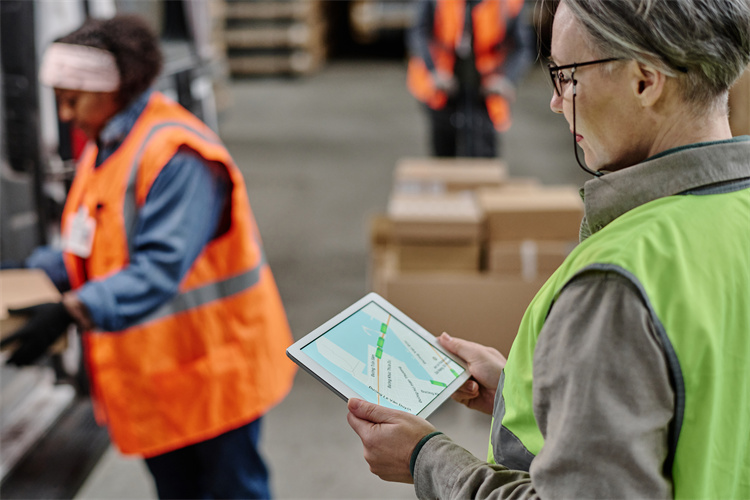6 Essential Steps for International Shipment Release

Understanding the international shipment release process holds immense importance for businesses today. The e-commerce boom has driven smaller businesses to seek international transportation solutions. Each step in the shipment release process requires careful attention due to its complexity. Businesses must navigate this intricate process with precision to ensure successful delivery. A comprehensive grasp of these steps can prevent costly errors and delays. Proper execution of the shipment release process not only enhances efficiency but also builds trust with global partners.
Step 1: Requesting a Freight Price
Understanding Freight Costs
Factors Influencing Freight Prices
Freight costs play a crucial role in the international shipment release process. Several factors influence freight prices. The weight and dimensions of the shipment affect the cost. Heavier and larger shipments incur higher fees. The distance between the origin and destination impacts the price. Longer distances require more resources, increasing expenses. Seasonal demand fluctuations also contribute to price variations. High demand periods lead to increased rates. Fuel costs significantly influence freight charges. Rising fuel prices result in higher shipping costs. Understanding these factors helps businesses plan budgets effectively.
How to Obtain Accurate Quotes
Accurate quotes ensure smooth international shipment release. Businesses must provide detailed information to freight forwarders. Precise weight and dimensions of the shipment are necessary. Accurate descriptions of the goods help avoid misunderstandings. Providing the exact pickup and delivery locations is essential. Businesses should specify the preferred mode of transport. Air or sea freight options have different pricing structures. Clear communication with freight forwarders ensures accurate quotes. Businesses should request quotes from multiple providers. Comparing quotes helps identify the best option for cost efficiency.
Choosing the Right Freight Forwarder
Evaluating Experience and Reputation
Selecting the right freight forwarder is vital for successful international shipment release. Businesses must evaluate the experience of potential partners. Experienced forwarders understand complex shipping processes. A strong reputation indicates reliability and professionalism. Positive reviews from previous clients reflect quality service. Businesses should research the forwarder's track record. Consistent delivery of shipments on time enhances trust. A forwarder's expertise in handling specific types of goods matters. Specialized knowledge ensures safe and efficient transportation.
Comparing Services and Rates
Comparing services and rates aids in choosing the best freight forwarder. Businesses should assess the range of services offered. Comprehensive services streamline the international shipment release process. Warehousing, packaging, and customs clearance support are valuable. Competitive rates without compromising quality are essential. Transparent pricing structures prevent unexpected costs. Businesses should inquire about additional fees or surcharges. Clear understanding of terms and conditions avoids misunderstandings. Evaluating both services and rates leads to informed decisions.
Step 2: Export Haulage
Preparing Goods for Transport
Packaging and Labeling Requirements
Proper packaging ensures safe transport during the international shipment release process. Businesses must use durable materials to protect goods from damage. Packaging should withstand handling and environmental conditions. Clear labeling provides essential information for handlers. Labels must include details such as contents, weight, and destination. Accurate labeling prevents confusion and delays in the international shipment release.
Scheduling Pickup and Delivery
Efficient scheduling optimizes the international shipment release timeline. Businesses need to coordinate with freight forwarders for timely pickups. Scheduled pickups ensure goods reach the port on time. Accurate delivery schedules align with shipping timelines. Timely deliveries prevent storage fees at ports. Proper scheduling enhances the efficiency of the international shipment release.
Selecting the Mode of Transport
Air vs. Sea Freight
Choosing between air and sea freight impacts the international shipment release. Air freight offers speed for urgent shipments. Businesses benefit from faster delivery times with air freight. Sea freight provides cost-effective solutions for larger shipments. Businesses save on costs with sea freight for non-urgent goods. The choice depends on budget and urgency in the international shipment release.
Considerations for Time and Cost
Time and cost considerations influence the mode of transport in the international shipment release. Businesses must evaluate the urgency of delivery. Urgent shipments require air freight despite higher costs. Budget constraints may favor sea freight for less time-sensitive goods. Businesses must balance time and cost for optimal international shipment release. Efficient decision-making ensures successful international shipment release.
Step 3: Customs Clearance

Understanding Customs Regulations
Required Documentation
Customs clearance plays a pivotal role in the international shipment release process. Businesses must prepare essential documents for customs authorities. A Bill of Lading serves as a receipt and contract for the shipment. The Commercial Invoice provides details about the goods and their value. Customs officials require these documents to assess duties and taxes. Accurate documentation ensures compliance with customs regulations. Proper completion of forms prevents delays and legal issues.
Common Challenges and Solutions
Businesses often face challenges during customs clearance. Incomplete or incorrect documentation leads to shipment delays. Customs authorities may hold shipments until issues are resolved. Businesses can avoid these problems by double-checking all paperwork. Compliance with country-specific regulations is crucial. Each country has unique import and export requirements. Businesses should stay informed about changes in customs policies. Advanced customs systems help identify compliance issues early. Proactive measures ensure smooth customs clearance.
Working with Customs Brokers
Benefits of Professional Assistance
Customs brokers provide valuable assistance in the shipment release process. These professionals understand complex customs regulations. Brokers handle documentation and compliance on behalf of businesses. This expertise reduces the risk of errors and delays. Customs brokers expedite the clearance process by preparing necessary paperwork. Their knowledge of local regulations ensures adherence to legal requirements. Businesses benefit from faster and more efficient customs clearance.
How to Choose a Reliable Broker
Selecting a reliable customs broker requires careful consideration. Businesses should evaluate the broker's experience and reputation. An experienced broker demonstrates a strong track record in handling shipments. Positive client reviews indicate reliability and professionalism. Businesses should inquire about the broker's knowledge of specific goods. Specialized expertise ensures accurate customs clearance. Clear communication with the broker is essential for successful collaboration. Businesses should establish expectations and timelines upfront. A reliable customs broker enhances the efficiency of the shipment release process.
Step 4: Documentation
Essential Shipping Documents
Bill of Lading
The Bill of Lading stands as a crucial document in international shipping. This document acts as proof of receipt for goods by the carrier. The Bill of Lading outlines details such as the type, quantity, and destination of the goods. Shippers must ensure that all information is accurate to avoid complications during transit. The Bill of Lading also serves as a contract between the shipper and the carrier. This ensures that carriers deliver goods to the correct consignee.
Commercial Invoice
The Commercial Invoice plays a vital role in the shipment process. This document provides a detailed description of the goods being shipped. The Commercial Invoice includes information about the value of the goods. Customs officials use this document to calculate duties and taxes. Businesses must ensure that the Commercial Invoice is complete and accurate. Errors in this document can lead to delays and additional costs.
Ensuring Accuracy and Compliance
Double-Checking Information
Accurate documentation prevents misunderstandings with customs authorities. Businesses should verify that all information matches the actual shipment. Correct documentation ensures compliance with international shipping regulations.
Avoiding Common Mistakes
Avoiding common mistakes in documentation is crucial for successful shipment release. Businesses should ensure that all documents are complete and legible. Incomplete forms can lead to shipment holds or rejections. Businesses must stay informed about the latest customs regulations. Changes in regulations can affect documentation requirements. Regular training for staff involved in documentation can help prevent errors. Proper documentation practices enhance the efficiency of the shipping process.
Step 5: Tracking the Shipment

Utilizing Technology for Tracking
Online Tracking Tools
Businesses must leverage online tracking tools to ensure efficient shipment monitoring. These tools provide real-time visibility into the shipment's location and status. Platforms like iThink Logistics offer comprehensive solutions for tracking shipments. Users can organize invoices, documents, and contracts through these platforms. The integration of tracking and administrative functions streamlines operations. Businesses gain valuable insights into shipment progress and potential delays.
Real-Time Updates and Notifications
Real-time updates play a crucial role in effective shipment tracking. Technology enables businesses to receive instant notifications about shipment status changes. Xeneta's Freight Forwarding Tools exemplify this capability by monitoring the ocean freight market. These tools provide real-time rates and identify market disruptions. Businesses can make informed decisions based on current data. Real-time notifications enhance supply chain agility and responsiveness.
Communicating with the Freight Forwarder
Regular Updates and Inquiries
Effective communication with the freight forwarder is essential for successful shipment tracking. Businesses should establish regular communication channels with their forwarders. Frequent updates ensure alignment on shipment status and timelines. Clear communication helps address any discrepancies promptly. Businesses can inquire about specific shipment details to stay informed. Proactive communication fosters a collaborative relationship with the freight forwarder.
Addressing Delays and Issues
Addressing delays and issues requires prompt action and clear communication. Businesses must immediately report any shipment discrepancies to the freight forwarder. Timely reporting allows for quick resolution of problems. Telex Release in Shipping offers a solution for improving speed and efficiency. This method allows for the release of goods without a physical bill of lading. Businesses can enhance supply chain agility by adopting such practices. Effective issue resolution minimizes disruptions and ensures smooth shipment delivery.
Step 6: Receipt of Shipment
Inspecting the Goods
Checking for Damage or Discrepancies
Businesses must inspect shipments upon arrival. Careful examination ensures goods match the order specifications. Identifying damage or discrepancies early prevents further issues. Businesses should verify quantities and check for visible damage. Accurate inspection helps maintain quality control standards.
Reporting Issues Promptly
Immediate reporting of issues is crucial. Businesses must contact suppliers if defects or damages are found. Prompt communication allows for quick resolution. Suppliers can address problems effectively when informed early. Businesses should document issues with photos and detailed descriptions.
Completing the Delivery Process
Finalizing Payment and Documentation
Finalizing payment completes the delivery process. Businesses must ensure all documentation is accurate and complete. Proper documentation includes invoices and receipts. Accurate records facilitate smooth financial transactions. Businesses should confirm payment terms and conditions with suppliers.
Providing Feedback to the Freight Forwarder
Feedback enhances future shipment processes. Businesses should provide constructive feedback to freight forwarders. Positive feedback reinforces successful practices. Constructive criticism helps improve service quality. Businesses benefit from improved logistics and stronger partnerships.
Successful international shipment release requires careful adherence to essential steps. Attention to detail and proper planning ensure smooth operations. Businesses must prioritize accuracy and compliance at every stage. Professional assistance offers valuable support for complex processes. Expert guidance minimizes risks and enhances efficiency. Businesses should consider partnering with experienced freight forwarders and customs brokers. These partnerships streamline logistics and improve outcomes. Comprehensive understanding and strategic execution lead to successful global trade.
See Also
Insights into Ocean Freight Logistics Innovations for 2024
Exploring Top Global Logistics Firms: A Comprehensive Overview
Exploration of 5 Key Supply Chain Conferences to Attend
Key Strategies for Achieving Supply Chain Cybersecurity Goals
Navigating Risks: Enhancing Supply Chain Risk Management Strategies
